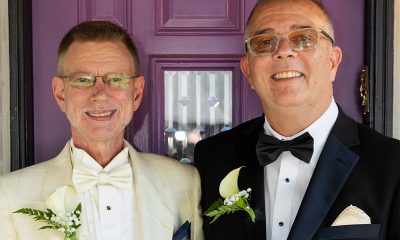a&e features
Mary Wilson shares Motown memories
Legendary Supremes singer in D.C. for Blues Alley engagement
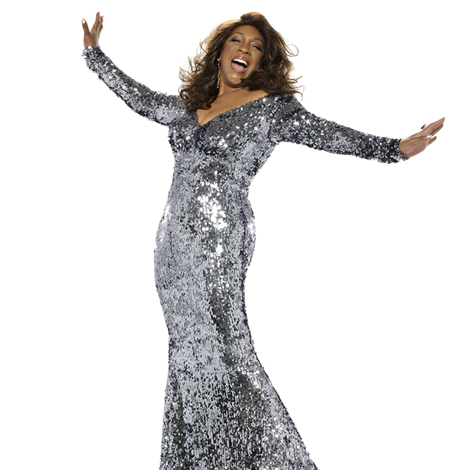
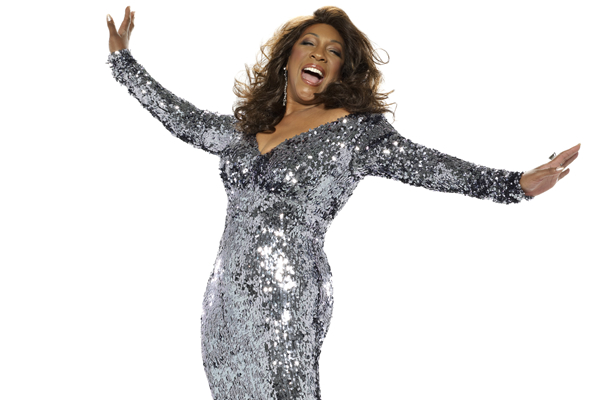
Mary Wilson says her Blues Alley engagement will feature standards, jazz and Motown hits. (Photo courtesy Blues Alley)
Now that we’re 50 years removed from the 1960s, there’s enormous interest in all things Motown.
Of course the label’s popularity never really went away but a flurry of recent events, from Broadway’s “Motown: the Musical” to exhibits of the Supremes’ legendary stage gowns to deluxe reissues of many of the label’s classic albums, point to a Motown fever burning as hot as ever.
Supremes founding member Mary Wilson — the only singer to stay in the group for its entire run — is in the midst of a four-night engagement at Washington’s Blues Alley. She spoke with the Blade by phone this week from her home in Las Vegas on a wide spate of topics from her recent dance hit, her stint on “RuPaul’s Drag Race,” her oft-misunderstood relationship with Diana Ross and more.
WASHINGTON BLADE: Tell us a little of what you have planned for your Blues Alley engagement, please.
MARY WILSON: It’s a combination. Last time I was there I believe I did my straight sort-of jazz show, so this time I will probably do some of the American songbook and some Supremes songs as well because I know a lot of people would like to hear that. So it will be a combination of all of that. I love doing ballads, you know, love songs. Also it’s Valentine’s week, so I have to honor that because I believe in love.
BLADE: Is it taxing to do two shows each night?
WILSON: I don’t normally do two shows so yeah, it really is. It’s a little harder now that I’m 72, almost 73. I’ll be 73 in March so it can be a little taxing because I’m used to doing one. But I love being on stage. I don’t have a problem performing it’s just, you know, the traveling and all that other stuff that makes it a little more difficult.
BLADE: On average, how much of the year do you spend on the road?
WILSON: I usually do about three to four gigs a month.
BLADE: It must have been gratifying to have a dance hit a little over a year ago when “Time to Move On” hit no. 23 on the Billboard dance chart.
WILSON: It was great. I mean, I didn’t even realize that was going to happen. We recorded that song years ago with a young man out of the Imagination group, Leee John. I think it was in 2002. Some beautiful people out in the San Francisco area, Sweet Feet Music, decided they wanted to release it. I was like, “Oh my God, OK.” So then we went in and did the video and they put it out and it charted. I was so surprised and elated that it charted. It was beautiful and wonderful.
BLADE: How did Sweet Feet even know about it?
WILSON: Well the Supremes fans are just everywhere. I don’t know. I think they knew Leee John. The Imagination may not have been as big here in the states, but they were big in the UK so they knew them.
BLADE: There was such a nice stash of Supremes album reissues and deluxe sets from Hip-O Select over several years but they seem to have suddenly stopped about two years ago. Do you know if any more are planned?
WILSON: I’m not sure. … I know Universal — I feel funny saying Universal instead of Motown — but I know they’re re-releasing our “Go-Go” album. I was just at Universal when I was in New York at the B.B. King club and I went and did some interviews there and they played me a lot of songs.
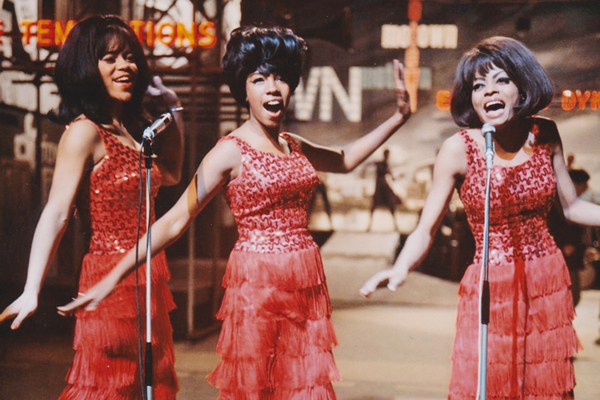
From left are Florence Ballard, Mary Wilson and Diana Ross. Wilson says tales of tension between the three original Supremes have been exaggerated over the years. (Photo courtesy Wilson)
BLADE: The bonus disc for the “I Hear a Symphony” expanded edition in 2012 had an entire 1966 Supremes concert recorded at the Roostertail in Detroit. Do you know how commonly Supremes concerts were recorded?
WILSON: I really don’t know. Things are showing up now that I didn’t even know had been recorded because this was before everyone had their cell phones and this and that.
BLADE: So you had the Supremes gowns in your possession all these years? It must have cost a fortune to store them all this time.
WILSON: This is true. Well yeah, I just had them in storage. I have a pretty large home here in Las Vegas so some I had in the basement but then it got to be too much so I had them in storage areas here. My daughter says I’m a hoarder but I say what I’m hoarding is worth a fortune. She never really understood it. … Some were in boxes. One of the famous ones I’m having restored. It was beaded on chiffon and just got so worn that the beads were falling off, so I’m having them repaired.
BLADE: Did you keep all the wigs too?
WILSON: Wigs not as much. They tend to get really old and then they’re no good. Pretty much everyone kept their own wigs throughout the years so I never really had a lot of those, but the gowns, yes. I do have everyone’s gowns except the ones that were stolen. … There was a lot of stuff stored at Motown where we originally stored them and when the building in Detroit was torn down, a lot of people just started taking stuff — pictures, masters, gowns. Some have landed elsewhere. There are a couple here in the Hard Rock Cafe casino in Vegas, so they’ve been all over the place. I don’t know how else they ended up here and there other than people just took them when the building was torn down. I even got a few of them back on eBay.
BLADE: There wasn’t as much Motown stuff in the National Museum of African-American History here in Washington as I would have thought. Were you ever in touch with its staff about having some Supremes items there?
WILSON: You know what, I’m a little disappointed because I offered them my gown exhibit to be displayed there and I never heard back from them. I made a presentation and everything. I guess they had so many things, so many artifacts, they couldn’t take everything so I understood, but I was disappointed. When I’m in D.C., I’m going to try and go see it. I’m very thrilled it’s there. I’m just not happy the Supremes gowns aren’t part of it.
BLADE: It seems insane to me that the Supremes never won a Grammy in the ‘60s. Was there some anti-Motown sentiment in the industry at the time or what?
WILSON: I really don’t know. It’s kind of hurtful when I hear of so many people having Grammys. We had 12 number one records but did not ever receive a Grammy. Three of our singles, much later, were inducted into the Grammy Hall of Fame, but that was all done after the fact. So yeah, I’m a little pissed on it.
BLADE: There are some Supremes B-sides like “Going Down for the Third Time” that sound to me like they could have been hits. Or some minor hits like “Some Things You Never Get Used To” seem like they should have charted higher. Are there any Supremes tracks you think could have been hits but weren’t released as singles or had the potential to chart higher than they did?
WILSON: I’ve never been one to know much about what’s a hit and what’s not a hit. I do think some of the songs were really quite good but for them to have been hits, I don’t really know. There were certainly a lot I really liked.
BLADE: So many elaborate sculptures and paintings have been done of the Supremes over the years. Which are your favorites?
WILSON: I receive so many beautiful pieces of art that people have done on us. One person who’s passed now, his name was Ted LeMaster did quite a few lovely paintings. I think I have four of them and they’re just absolutely gorgeous. I’m working on a coffee table book of the Supremes gowns so I should include some of those as well. There’s another guy and, oh gee, I may have to get you his name later because it’s not coming to me off the top of my head, but he does these Supremes dolls and they are just beautiful. There are lots of artists out there and they send things to me all the time. I have them all over my place here.
BLADE: How did you enjoy being a guest judge on “RuPaul’s Drag Race”?
WILSON: It was great. He was just wonderful. You know, gorgeous. He’s a big Diana Ross fan so it was almost like seeing Diane in a way because he kind of does her thing. He looks great and all that stuff and it was loads of fun. I met so many wonderful, or I should say gorgeous, so many gorgeous people.
BLADE: The Frontier shows, the last with Miss Ross, that became the “Farewell” album in 1970 — was that set list pretty much the Supremes show in 1969 or was some of the stuff you did there, like the “Aquarius” medley with all the audience sing-alongs, was that maybe just worked up for that engagement knowing so many celebrities would be present?
WILSON: No, that was pretty much our normal show we toured with that year. Everything we did there, we’d pretty much been touring with, yes.
BLADE: Do you keep in touch often with (former Supremes) Cindy Birdsong and/or (Ross replacement) Jean Terrell?
WILSON: Yes. Last year we had the gown exhibit at the Grammy museum and I invited all the ladies there for that. Jean Terrell came, Scherrie Payne was there and Susaye Greene. I keep up with Cindy but I don’t see her as often as I want since she’s in L.A. and I’m in Vegas but I spend a lot of time in L.A. so I see her when I’m there.
BLADE: Is she well?
WILSON: I don’t want to get too much into her personal things. She’s a little older and she’s had some health issues.
BLADE: Do you ever hear from (founding Supreme) Florence Ballard’s three daughters? (Ballard left the group in 1967 and died in 1976.)
WILSON: Yes, whenever I’m in Detroit, they always come out and we talk on the phone a lot actually. So yeah, I do keep up — well, I should say they keep up with me, let’s put it that way.
BLADE: Did you enjoy “Motown: the Musical”?
WILSON: I loved it. I thought it was wonderful. Obviously it was Berry Gordy’s perception of what was going on and everybody, you know, there’ve been all these books, everybody has their own way of looking at it, but it’s all true. It’s just different perceptions from different people. The musical is more Berry’s perspective so he’s obviously looking from the top down. We were looking from down to up, but it’s just the way different people perceived it. But I absolutely loved it. In fact just a week or so ago it opened in L.A. and I flew out there and attended the opening. I was also at the London opening and, of course, the New York opening was also great.
BLADE: It looked like there was a lot of warmth between you and Berry and Diana at the opening. Would you say feelings have mellowed over the years?
WILSON: There always was. Some things that are brought out further tend to be the more negative things. Things that were really great are not broadcast as much so people tend to think there was a lot more dislike there but that’s just not true. We were all very, very close. There were always things going on like maybe you didn’t like this … that didn’t mean that the love was not there. It always was. But we were all different, we all had our own opinions so a lot of times when you speak out, people say, “Oh my God, they’re having a fight, they hate each other,” and that’s just not true. It’s just different likes and dislikes.
BLADE: I’ve read a lot of the books — your books, Randy Taraborrelli’s books. It always seems like a handful of incidents get told and retold. When you think of all the hours you and Florence and Diana obviously spent together rehearsing, traveling and recording, there had to have been more peace than tension or you’d never have gotten anything done.
WILSON: Well that’s what I’m saying. Some of the things that were brought out and broadcast as if they were major, major things, it’s just not true. People think there’s some big feud between Diane and I and there really is not. It’s just that she’s gone her way and I’ve done my thing so no, we’re not close, but that’s just because over the last 50-some years, our lives have gone in several different directions. I love her as much as I love Flo. People tend to think I love Flo more because they view it as we worked together more on the choreography, on the harmony. We were always together. And now Florence is not here to protect herself, so I don’t talk about her a lot because of that. But I don’t love Flo anymore than I love Diane. I love them both as much as I love my own sister.
BLADE: Did you see Mary Wells much in her later years? Do you think she regretted leaving Motown so early?
WILSON: I saw Mary up to the very end of her life. I actually worked with her trying to do whatever we could in terms of her cancer bout. I don’t know — I never talked to her about that so I really don’t know.
BLADE: It’s staggering to me the amount of material the Supremes recorded in the ‘60s. You must have been in the studio constantly.
WILSON: Well, we were also on the road a lot, too. But yes, what happened sometimes is we would fly into Detroit, record a few songs and then fly right out. So yes, we did record a lot of songs.
BLADE: Now that so many have been released on these expanded editions, I’m sure there are some you have no memory of, right?
WILSON: Not just songs. Sometimes I see pictures that I can’t remember and yet there I am in the picture. It’s just because there were so, so many. There really were.
BLADE: So much has been made of (Motown session singers) the Andantes singing with Diana on Supremes studio material the last few years she was in the group. But you and Cindy obviously still had to learn the parts for TV and concerts. If that was seen as some sort of time-saving device, what was the rationale?
WILSON: There was a lot going on then. Diane was already starting to record songs for her departure, so a lot of times, it was for that reason. But then they’d decide to use some of the recordings on Supremes albums even though we hadn’t been there. That happened a lot. Other times we were out rehearsing with Jean Terrell for the new group, so it was almost like being in two groups there for a while. Cindy was also still fairly new in the group so there wasn’t a lot of cohesiveness those last couple years. And the producers, you know, it’s like this with a lot of my friends who are actors and actresses, a lot of times it’s the producers and writers who make these kinds of decisions and you’re not even in on the decision making in the group. And then of course, Motown was moving to L.A. so there was a lot of stuff going an and we were not really looked upon as a group anymore because obviously Diane was leaving and all. It had to do with a lot of that stuff.
BLADE: You and Florence always had such great harmony and obviously it was before the days of Auto-Tune and all the studio bells and whistles they have now. Did you have to learn to sing harmony or was it something you were able to do naturally?
WILSON: Well it wasn’t just me and Flo, it was me, Flo and Diane and we all sang harmony together a lot. That was really our style naturally. That’s what you did back in those days, you sang. You didn’t have anything else to rely on. We didn’t even need music. We did shows in the early years without music or maybe just with a guitarist, Marvin Tarplin. So no, it was very natural and we didn’t have any help in that department. Actually the Supremes were a very harmonic group in terms of our style, that’s what we did. I kind of hated later on when we lost that because it was something we’d been very good at. It’s hard to harmonize with just two people. Before when we had Diane and (early members) Betty (McGlown) and Barbara (Martin), with four people, you know, you could do great harmony. We kind of lost that style when we found the hits. They were great, of course, but we lost something we were good at.
BLADE: I feel like (Four Tops lead singer) Levi Stubbs is one of the unsung heroes of Motown in a way. He was so committed to the group and had no apparent interest in solo fame like David Ruffin or Diana Ross. Was that just his personality?
WILSON: Yeah, that was his personality and, you know, it was great for the group. But some things like who’s around you and how you feel about it, those are very individual things but that’s one thing about Levi — he was very dedicated to his group.
BLADE: Whenever I see the (1968 TV special) “TCB,” that elevated glass stage looks so precarious. I assume it was taped on a soundstage somewhere. Part of me is always thinking you or the Temptations are going to fall off the edge of it or it will topple over or something silly.
WILSON: There was no danger of that. It was this very huge, Plexiglass stage and there was no way of us falling off. It was as large as any stage, probably larger than most stages. I think it was taped at NBC Studios but I’m not totally sure.
BLADE: What would Florence think of all this endless interest in the Supremes all these years?
WILSON: I think she’d feel the same as I — amazed that it’s lasted this long and that people are still interested. I wish she were here to see that people are still in love with Flo, Diane and Mary. As Flo said, “Honey, we is terrific.” And it’s true. Everywhere I go, people ask me more about Flo than they do about me or Diane. I think she would be very, very happy to know that she is so well remembered. When I sing “I Am Changing” (from “Dreamgirls”) in the show, and of course I dedicate it to Flo, the audience almost always gives me a standing ovation just when I’m saying that. She would be elated. I wish fate had been different for her. She was not like me. I got a chance to fight back and show the world who I am. Everybody can’t be, you know, the star of the show but you can certainly be a star in the show and that’s the way I look at it.
a&e features
Local, last-minute holiday gift ideas
Celebrate the season while supporting area businesses
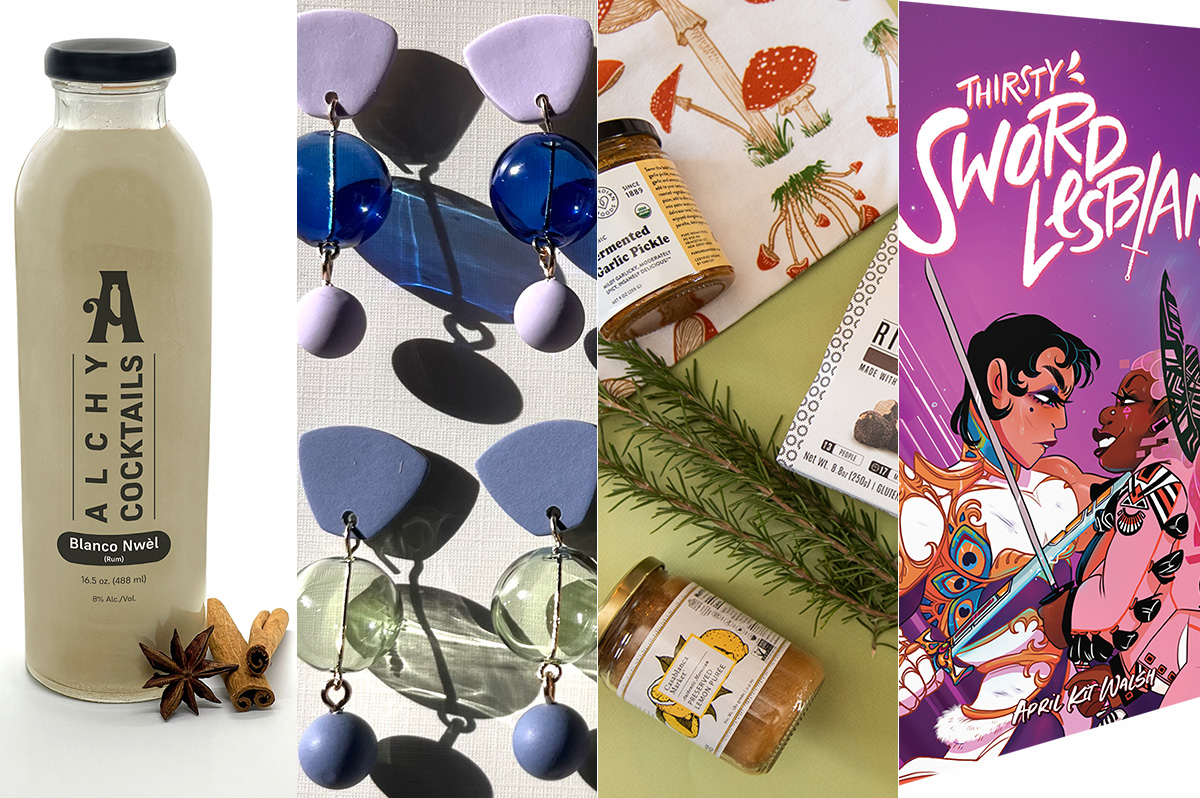
The DowntownDC Holiday Market is bustling. Union Station is decked out with its annual Christmas tree. Washingtonians have wrapped their houses and apartment balconies with festive lights and holiday decorations. The holiday season is here. And with stockings to fill and empty space under the tree, Washington’s local shops and artists have plenty to offer.
Show your LGBTQ and D.C. pride with the Washington Blade’s annual holiday gift guide.
To embrace the holiday buzz: The Blanco Nwèl cocktail from Alchy Cocktails. This Caribbean eggnog is one of Alchy Cocktail’s seasonal holiday cocktails. The flavor profile is similar to coquito, a traditional Puerto Rican Christmas drink with a coconut base. As a queer and Caribbean-owned business, Alchy Cocktails has been based out of Washington since 2021. Blanco Nwèl is available in both cocktail ($24) and mocktail ($12) online and at a variety of holiday markets, including the Tingey Plaza Holiday Market, the Flea Market at Eastern Market, Union Station’s Main Hall Holiday Market, and more. ($24)
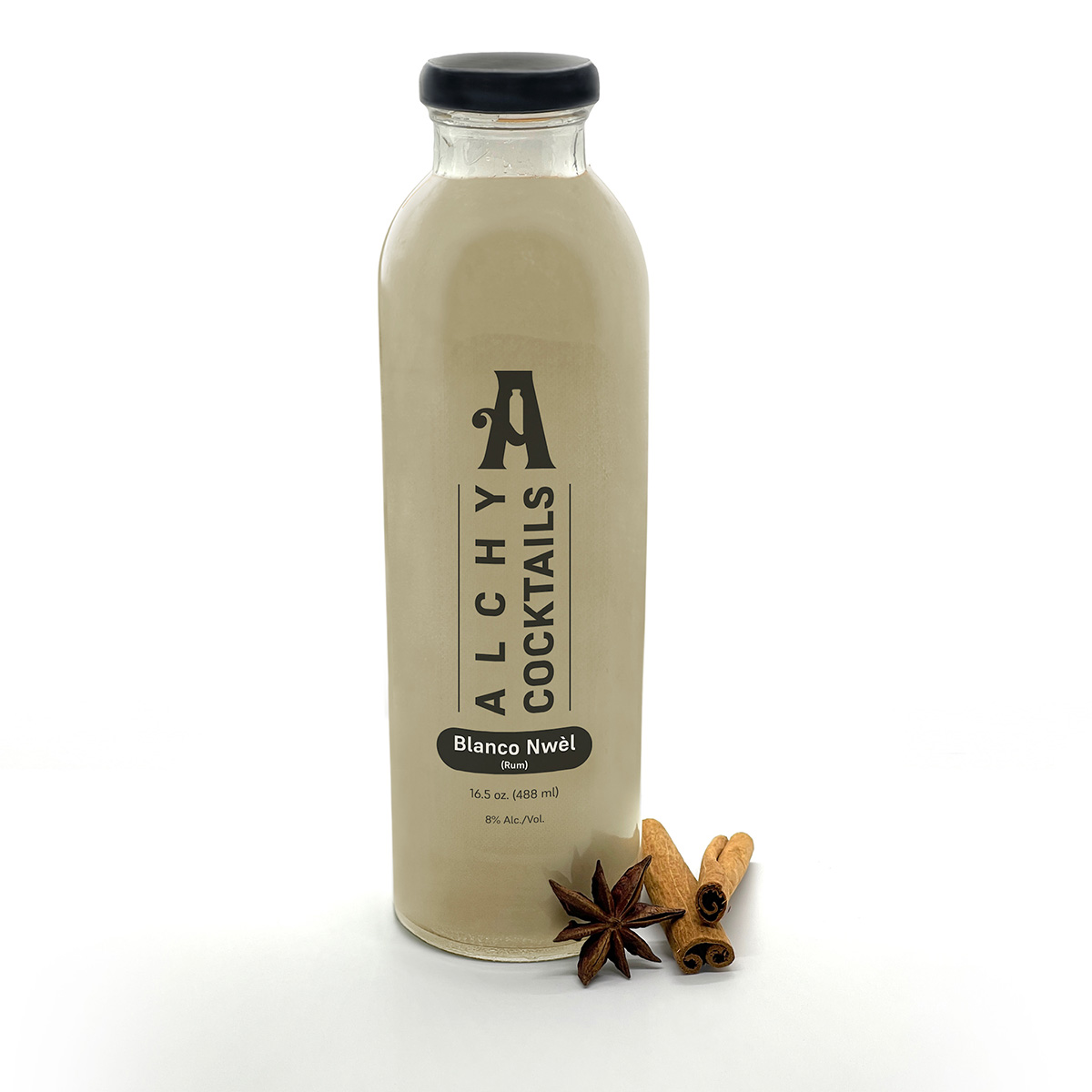
A spicy bite: Gordy’s Cajun Okra from Salt and Sundry. These spicy, tangy pickles pull on Southern Cajun-style flavors, packing a punch with paprika, cayenne, and more. Gordy’s is an LGBTQ-owned and Washington-based brand, making this gift an opportunity to support a local LGBTQ business straight from the jar. This pantry staple is available on Salt & Sundry’s website and at its locations in Union Market, Logan Circle, and its Georgetown holiday pop-up store. ($14)
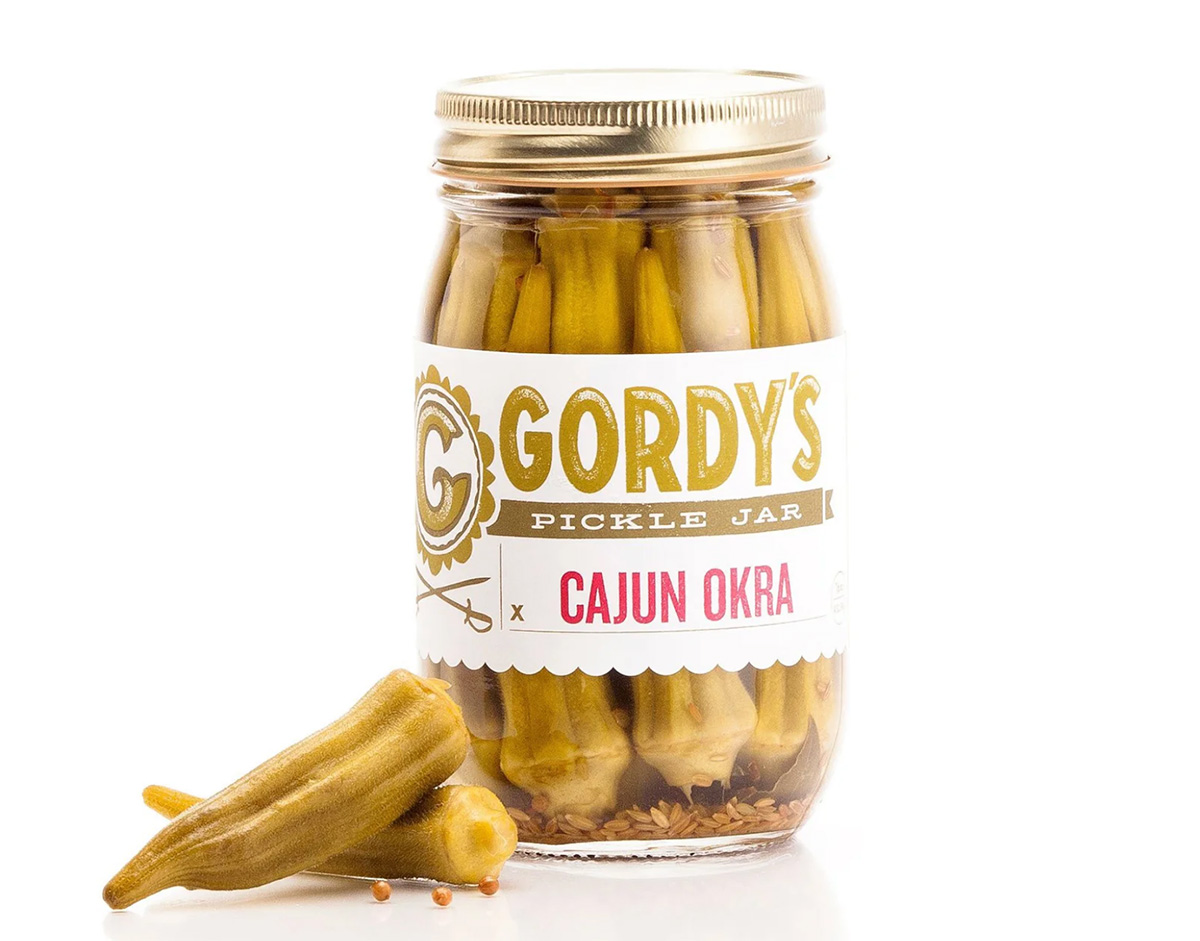
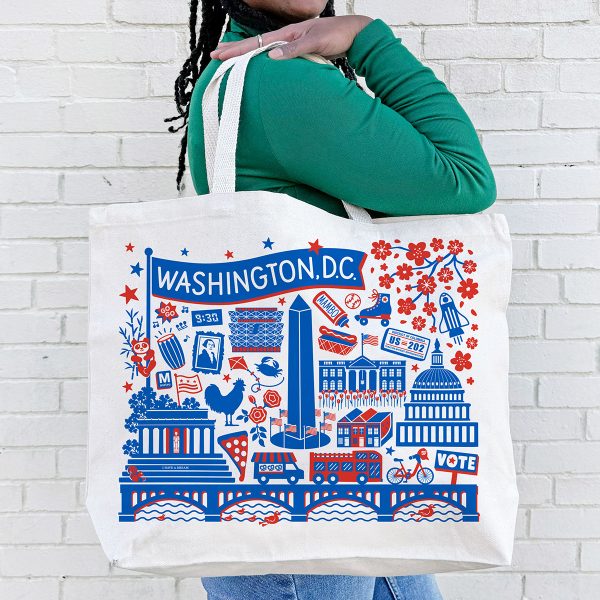
To celebrate Washington pride: The DC Landmark Tote Bag from The Neighborgoods. Native Washingtonians, visitors, friends and family alike will find something to love about this Washington-themed tote bag. Food trucks, the 9:30 Club, the Metro logo and pandas from the National Zoo are just some of the city’s landmarks depicted across the tote in a red, white, and blue color palette. The tote is a part of the DC Landmarks collection, which donates 10 percent of its sales to the American Civil Liberties Union. The Neighborgoods itself is a local, woman-owned business built out of a passion for screen-printing in 2013. The 100 percent cotton canvas tote is for sale online or at the DowntownDC Holiday Market. ($22)
To give friends and family their flowers: The Flowers Bandana from All Very Goods. This 100 percent cotton bandana was designed in Washington and hand printed in India. Its uniqueness comes in being covered with the faces of Black women, representing a “love letter to all women but especially Black women,” according to All Very Goods. The Black woman-owned and operated business, based out of Northwest Washington, has a mission to celebrate diversity and representation through its products. The bandana intends to give Black women their “flowers.” The Flowers bandana is available for purchase online. ($24)

To unlock culinary creativity: The Curious Chef Gift Collection from Each Peach Market. This customizable collection of kitchen oddities — ranging from tinned fish to chili oil — is a quirky gift for the most inventive chefs. The collection is available in a Standard Santa, Extra Goodies and Super Holiday Size for up to $165. The Washington-based market, founded in 2013, permits customers to make the collection special by specifying what unique ingredients are packaged, including products made by local or LGBTQ brands. Each Peach Market offers assembly and pick up in-person at its Mount Pleasant shop and also offers local delivery and nationwide shipping via its website. ($85)
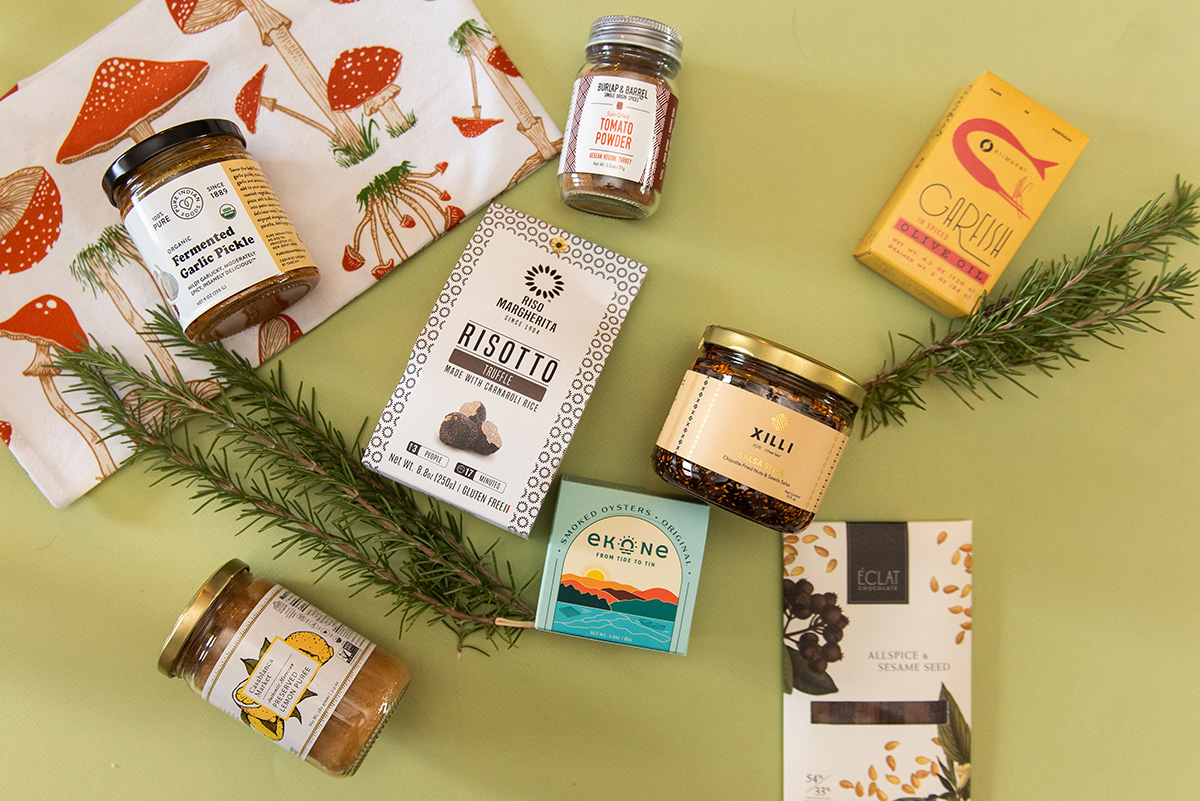
To give a touch of sweetness: The DC Landmark Chocolate Covered Oreo Holiday Cookies from Capital Candy Jar. Wrapped in a festive red bow, this box of nine cookies embraces love for Washington and the holiday season in one. Among the dark and milk chocolate covered cookies are images of the U.S. Capitol, the White House, the Lincoln Memorial, the Jefferson Memorial and festive hollies. The treat, packaged in a Hill East facility just a few blocks from the Capitol, is available for purchase online and at the DowntownDC Holiday Market. ($23.95)
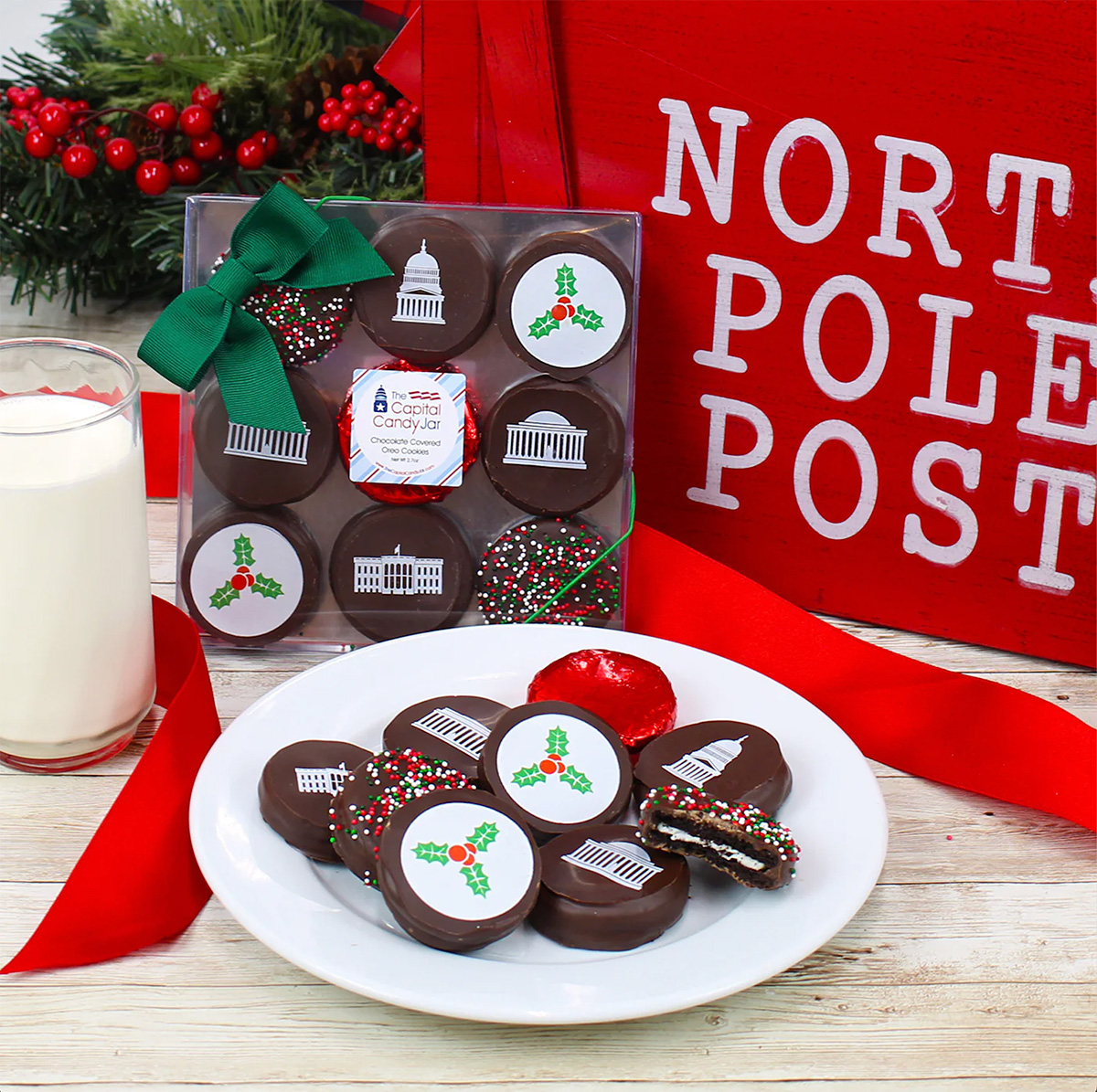
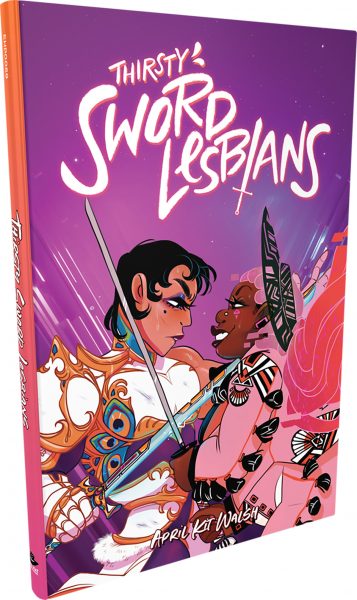
To celebrate queer gaming: Thirsty Sword Lesbians from Labyrinth Games & Puzzles. This roleplaying game embraces lesbian culture by unlocking a world of swords, romance, and battle. Ideal for group settings, the book presents a system of world building and character identities that are best brought to life by creative minds. Labyrinth, which has been a local Washington business for more than 15 years, celebrates non-digital fun through games and puzzles that connect the community. This gift is offered online and at Labyrinth’s Capitol Hill location. ($29.99)
To make a bold statement: The “Resist” T-shirt from Propper Topper. This locally screen-printed black tee features the Washington flag designed within a raised fist, symbolizing both Washington pride, and political resistance. The shirt is made exclusively by Propper Topper, a local Washington business that evolved from a hat shop to a gift store since opening in 1990. The tri-blend unisex shirt is available both for pickup at Propper Topper’s Cathedral Heights location and shipping via the online site. ($32)
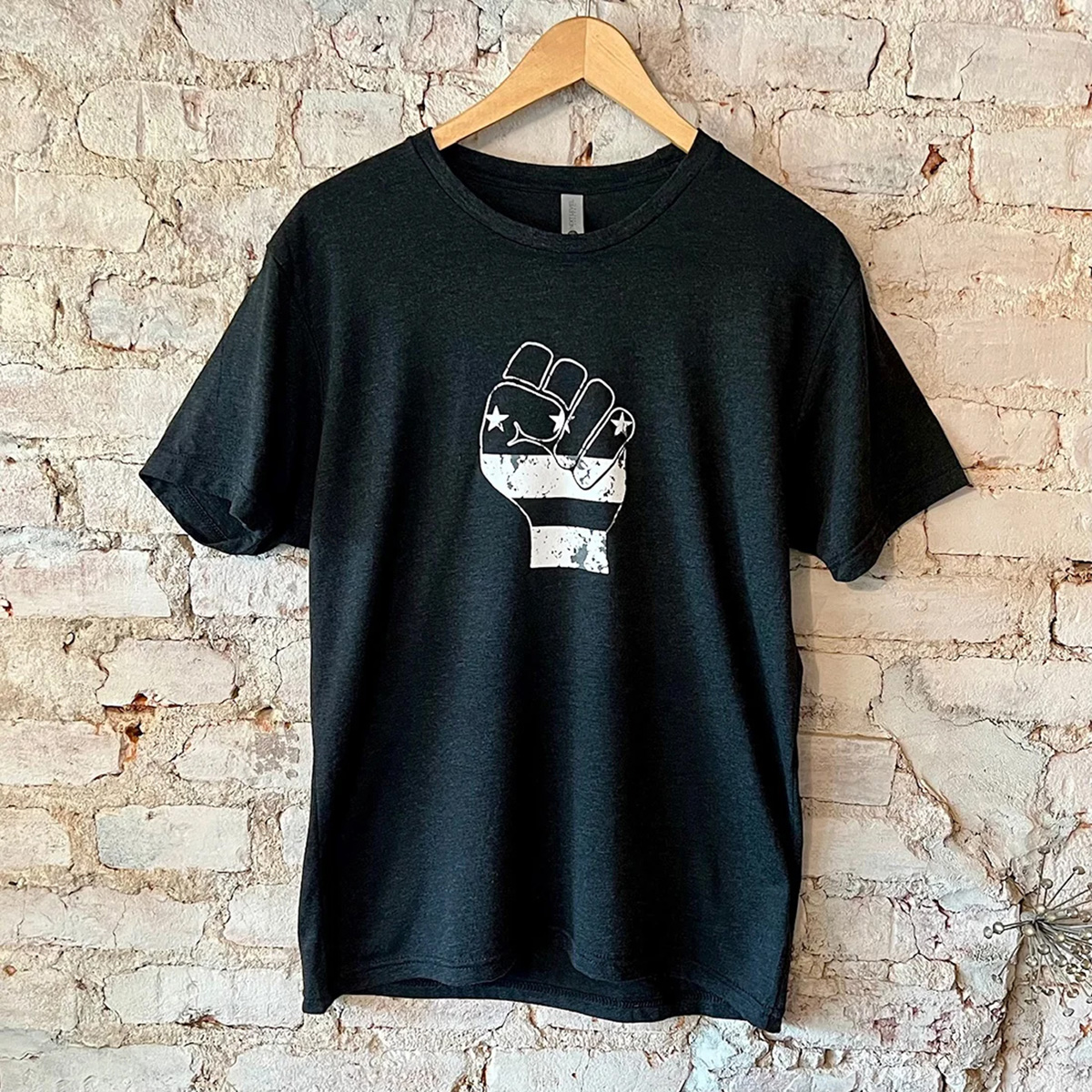
To keep it c(g)lassy: The Glass Ball earrings from Blue Moon Aquarius. Gifting can rarely go wrong when it comes to a new pair of earrings. The unique statement earrings — made of polymer clay, glass, and 18k gold plating over surgical steel — are hand cut, sanded and assembled in Washington, meaning each set is unique. Blue Moon Aquarius, a local brand, is known for its small batch jewelry and home decor designed with clay materials. Available in oxblood, hunter green, lavender, and bluestone color palettes, these earrings are available for purchase on Blue Moon Aquarius’ website and at the DowntownDC Holiday Market. ($48)
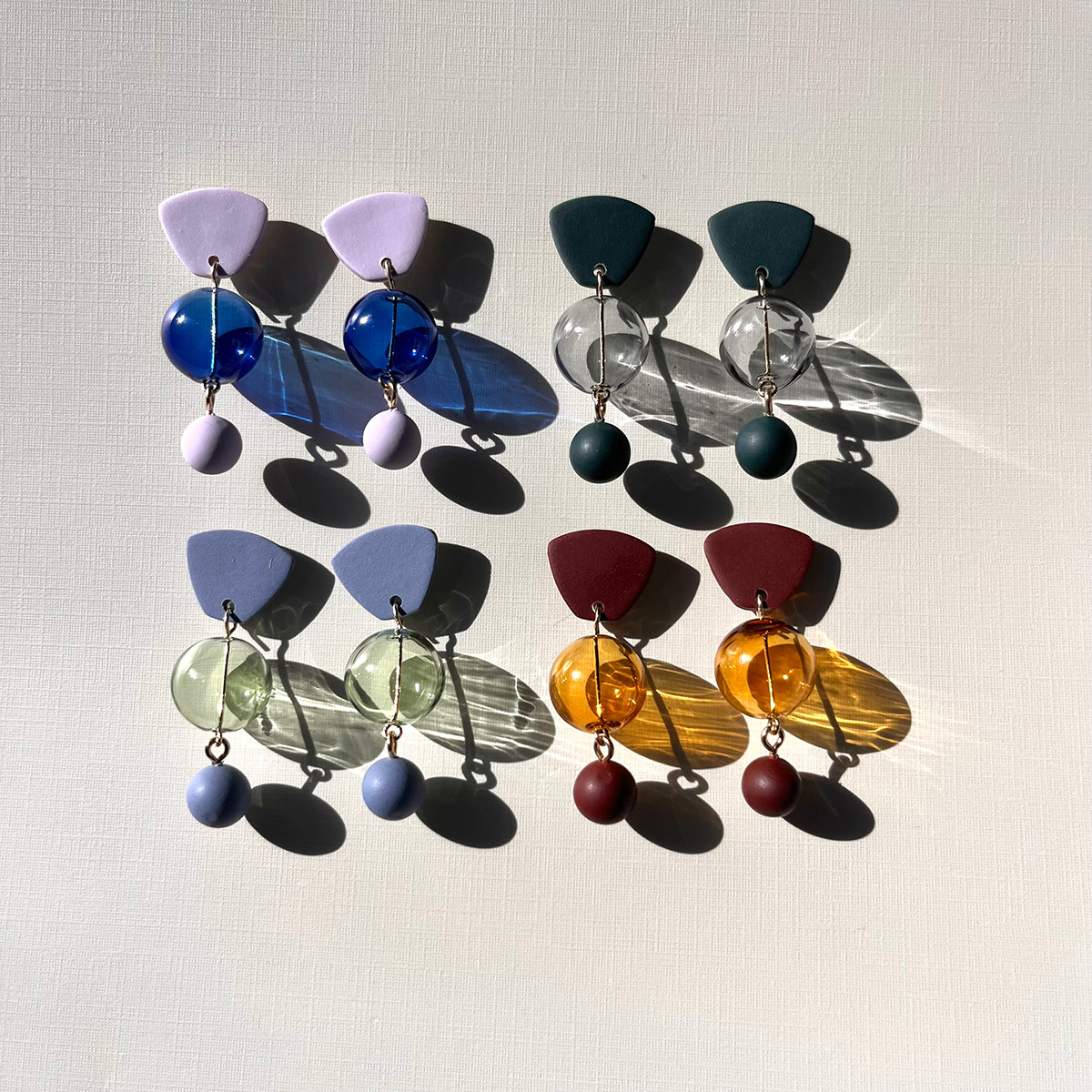
To elevate a holiday tea or charcuterie party: The Honey Flight: Tea Lover’s Selection from BannerBee. This local honey company presents the ideal gift to make cozying up with a cup of tea slightly more special. The Honey Flight contains three types of raw wildflower honey infused with fair trade Ugandan vanilla bean, chai spices, and locally sourced lemon thyme herb. The gift is also an opportunity to uplift a family company based in the Mid-Atlantic that offers all-natural, sustainable products. The flight is available online, at the DowntownDC Holiday Market or at the Arlington Courthouse and Dupont Farmers’ Markets. ($36)
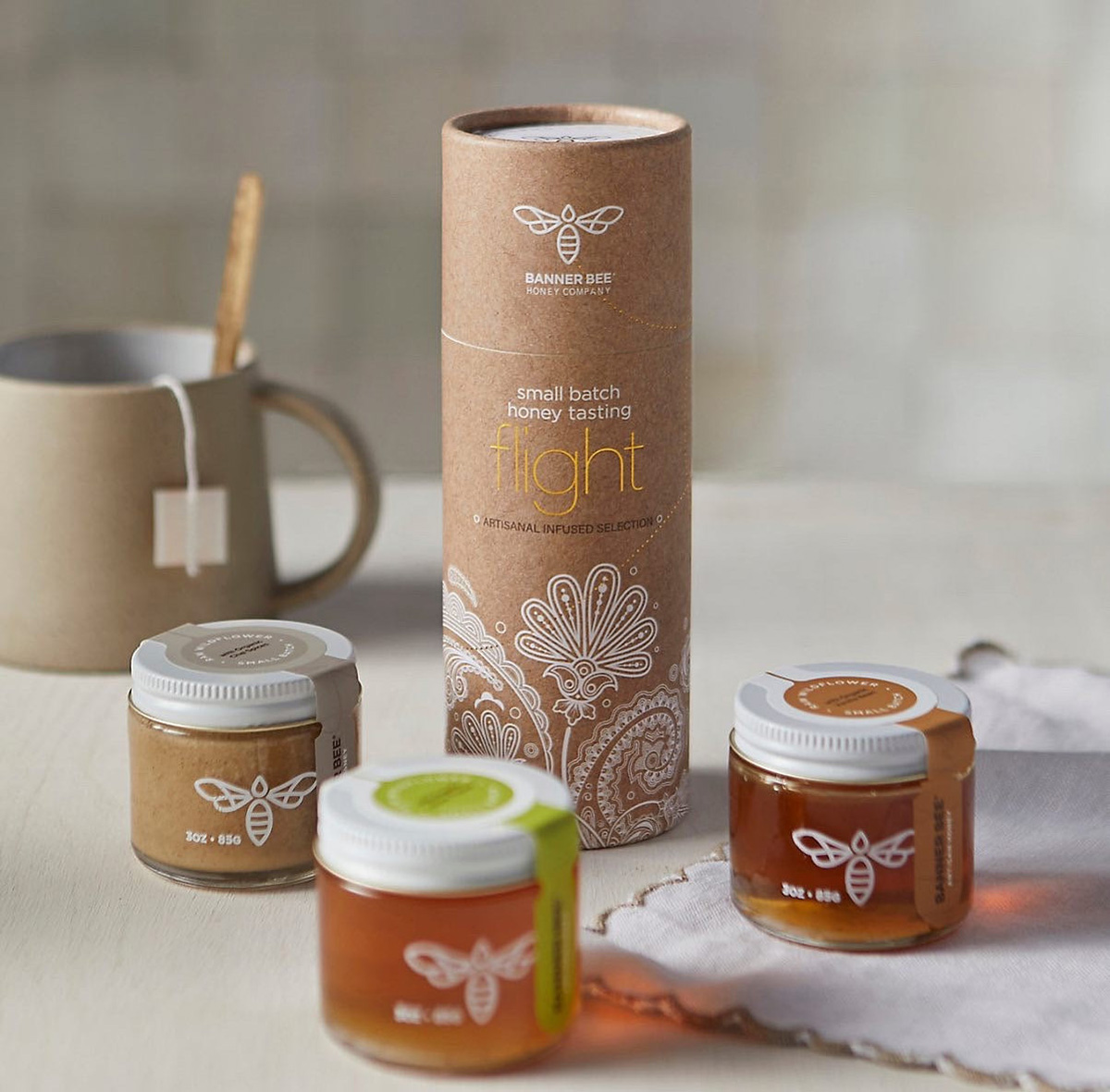
For Baltimore shoppers: If you’re in Charm City, don’t miss Balston Mercantile, opened by a gay couple in June. Their gorgeous shop in the Hampden neighborhood offers an array of unique, upscale finds, from barware and artwork to cookbooks and home decor and more. (849 W. 36th St.)
a&e features
Have yourself a merry John Waters Christmas
Annual holiday show returns to Alexandria and Baltimore
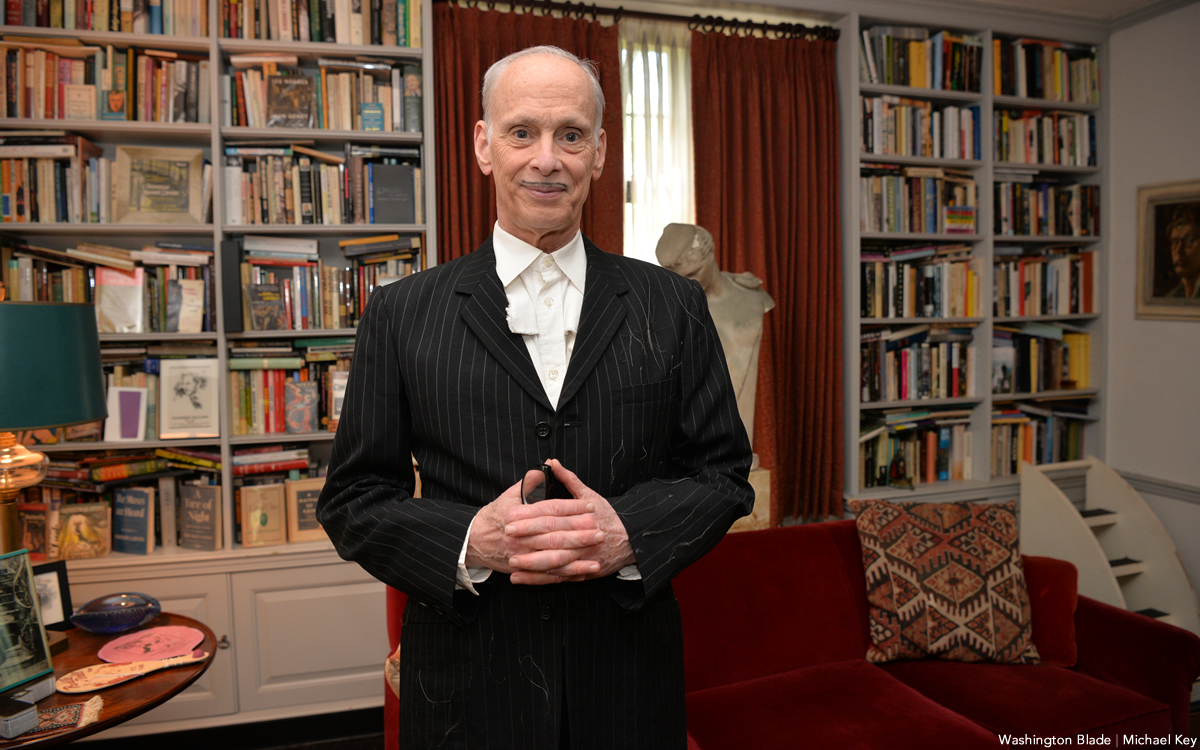
When it comes to iconic Christmas scenes in movies, none can top the tree-toppling tantrum thrown by cha-cha heels-deprived Dawn Davenport in John Waters’s fifth full-length feature “Female Trouble” from 1974. Therefore, it’s not surprising that Waters continues to make art out of Christmas, performing his spoken word Christmas tour in cities across the country. Waters has even more reason to celebrate with the release of his new red vinyl 7” single, a cover of Little Cindy’s “Happy Birthday Jesus (A Child’s Prayer)” on the A-side, and “A Pig Latin Visit From St. Nicholas” on the B-side. If you’re still looking for unique Christmas gifts, consider this record. As always, John was kind enough to make time for an interview in advance of his tour dates.
BLADE: John, in preparation for this interview with you, I went back and listened to Little Cindy’s original rendition of “Happy Birthday Jesus (A Child’s Prayer)” on your “A John Waters Christmas” CD.
JOHN WATERS: One thing I did, if you notice, I make the same stumble in my recording that she did in the original.
BLADE: It sounded to me like she got choked up.
WATERS: No, I think she just stumbles over a word, so I stumbled over the same word. It’s appropriation, insanely.
BLADE: Is this a song you first became aware of in your youth or when you were an adult?
WATERS: When I was doing the Christmas album, I had this friend named Larry Benicewicz. He was kind of my idea man with music. He knew every single old record. I would say to him, “Weird Christmas songs,” when we were doing a soundtrack, or a song about bears, or a song about this, and he would give me all these tapes. It was one of the ones he played for me. A lot of the songs I put in my movies and on my records, I did know as a kid. I did not know this one, but I immediately embraced it. I don’t think it’s campy. I think it really is spiritual in a weird way. My doing it makes it a novelty record. I am really for novelty records, and there aren’t any anymore. Why was there not a COVID novelty record? That’s insane. The dance “The Bug” that’s on the “Hairspray” soundtrack would be perfect for COVID.
BLADE: The thing that struck me was that for a Christmas song in the voice of a child, a kind of death pall hangs over it, with lines like, “If I was good you’d let me live with you” and “they nailed you to the cross, they wanted you to die.”
WATERS: All of it! When I see children at midnight mass kneeling in front of a nude man nailed to a cross, I feel like I’m at The Eagle! It is S&M, it’s creepy. I took the same cover (photo) from her record to parody and put my face on it. The same thing I did with The Singing Dogs last year when I covered (their version of) “Jingle Bells.” I’m really into novelty records. I love them and I’m trying to bring them back. I don’t expect anybody to ever play these records. Even The Singing Dogs one said on it, “Please do not play this record” [laughs]. And the flipside, the Pig Latin version, is almost impossible to listen to.
BLADE: I’m so glad you mentioned that. “A Pig Latin Visit From St. Nicholas” reminded me of the lost art of speaking in Pig Latin. I also recall watching the PBS series “Zoom” as an adolescent and learning to speak “ubbi dubbi,” a distant relative of Pig Latin. Do you think that the time is right for a Pig Latin or ubbi dubbi revival?
WATERS: Here’s the thing, I never could pick up any language, except Pig Latin. I’ve been in every foreign country. Foreign countries have given me money to learn to speak the language. I can never do it! But Pig Latin…my parents and other parents in the ‘50s spoke Pig Latin so kids couldn’t understand what they were saying. Then my mother taught it to me, and I used it. The hardest take to shoot in “Pink Flamingos” was not eating the dog shit. It was when the cast skipped, in one take, saying “E-way, are-yay e-they ilthiest-fay eople-pay in-hay e-they ole-hay ide-way orld-way.” We’re the filthiest people in the whole wide world in Pig Latin. We had to do so many takes so they could do it once without screwing it up. In “Polyester,” Edith (Massey) answers the phone, “ello-hay.” I did a photo piece where it was all subtitled in Pig Latin. Like “osebud-Ray” (from “Citizen Kane”) or in “Streetcar,” “ella-Stay!” [Laughs] All the iconic dialogue translated into Pig Latin. My assistant who helped me do it, had never heard of Pig Latin. She really got good at it because she lived in many foreign countries and can pick up languages. But it’s not that easy to do it correctly and read it. Your computer will translate into Pig Latin.
BLADE: AI understands Pig Latin?
WATERS: I guess that’s AI. It wasn’t 100% right, but it was close. I can speak it if I look at it, but just do a bit at a time. It was a challenge that no one would possibly care about or want to do.
BLADE: I think you pulled it off very well.
WATERS: If you want people to leave on Christmas morning, you put it on. That’s how you get your guests to leave. It’s time to go.
BLADE: Ood-gay i-bay! How did your relationship with record label Sub Pop, which released 2021, 2022, 2024, and new 2025 holiday singles, come about?
WATERS: I believe the first thing I did for them was “Prayer to Pasolini.” They came to me through Ian Brennan. He’s won a couple Grammys for World Music, but he is also is one of my agents who does the Christmas tour and a lot of my shows, anything with music. He helped me arrange each one of the songs. He had a relationship with Sub Pop. It was perfect. My friends in Baltimore, (the band) Beach House, have had huge success.
BLADE: That’s right, they’re on Sub Pop!
WATERS: Yes! I’m happy to be on it. I’ve even been to the warehouse and posed for pictures like Jackie Suzanne used to do.
BLADE: Is there any chance that “A John Waters Christmas” might be reissued on vinyl by Sub Pop?
WATERS: No. It’s such a nightmare to get the rights and to renew them. You have to find the publisher and the writer, and they usually hate each other. It doesn’t matter if it’s obscure or famous, it’s hard to get. You have to make the deal. The singer doesn’t get anything unless they play it on the radio. It would be so complicated legally, and there would be such a [laughs] tiny audience for it. I hope it will come out again. The same thing with the one for Valentine’s Day. I had two of them that did quite well when they came out; “A Date With John Waters and “A John Waters Christmas.” The “John Waters Christmas” album is still the soundtrack that plays whenever I’m doing my spoken word Christmas show as people are entering the theater.
BLADE: Aside from your annual Christmas show tour, what else do you do for the holidays now, and are there any traditions that you’ve carried over from your family?
WATERS: Certainly! I have two sisters, my brother’s widow, and me, so there are four and we take turns each year to have the Christmas dinner. Mine was last year. An entire sit-down dinner. Mom’s China, the silverware, the entire full dinner. It’s pretty traditional. I don’t have a Christmas tree, but I do decorate the electric chair from “Female Trouble.” That is a tradition in my family. We do have Christmas decorations, but they’re usually weird ones that fans sent me. I have one with Divine knocking over the Christmas tree, and the Christmas tree lights up, all sorts of amazing things. There is definitely a tradition here that might be a little altered, but it is definitely a tradition. I used to have a giant party every year, but COVID ended that. I still wouldn’t want 200 people in my house breathing right now.
BLADE: I was looking at your tour schedule and wondered if there are any new cities in which you’ve never performed the John Waters Christmas show that have been added to this year’s schedule?
WATERS: I don’t think there’s a city in America in which I haven’t done one show! The only places I haven’t been to are Hawaii and Alaska. I could do it there, but it’s too long on a tour. I can’t think of a city I haven’t played in in America over the last 50 years. The Christmas show is completely different every year. It doesn’t matter if you saw it last year.

Some gifts scream practical, others whisper luxury, and a few flat-out blur the lines. From cocoa that feels ceremonial to a cologne that linger like a suggestive smirk, this year’s ultimate gift picks prove that thoughtful (and occasionally naughty) presents don’t have to be prosaic. Welcome to your holiday cheat sheet for festive tangibles that get noticed, remembered, and maybe even result in a peck of gratitude planted under the mistletoe. Consensually, of course.
Amber Glass Champagne Flutes
Pop the champs – but make it vintage. These tulip-shaped stunners in amber-tinted glass bring all the Gatsby vibes without the Jazz-age drama. Whether you’re toasting a milestone or celebrating a Tuesday, their seven-ounce capacities and hand-wash-only care make ‘em as practical as they are pretty. Pair with a thoughtful bottle of bubs and gift with a glittering wink. $18, NantucketLooms.com
Disaster Playbook by Here Comes the Apocalypse
Because the end of the world shouldn’t be a solo act, this spiral-bound guide is your step-by-step roadmap to surviving and thriving when everything else goes sideways, which might be sooner than you think. Packed with checklists, drills, and a healthy dose of humor, it’s like a survival manual written by your most prepared (and slightly snarky) friend. Whether you’re prepping for a zombie apocalypse or, more realistically, REVOLUTION!, this playbook’s got your back. $40, HereComesTheApocalypse.com
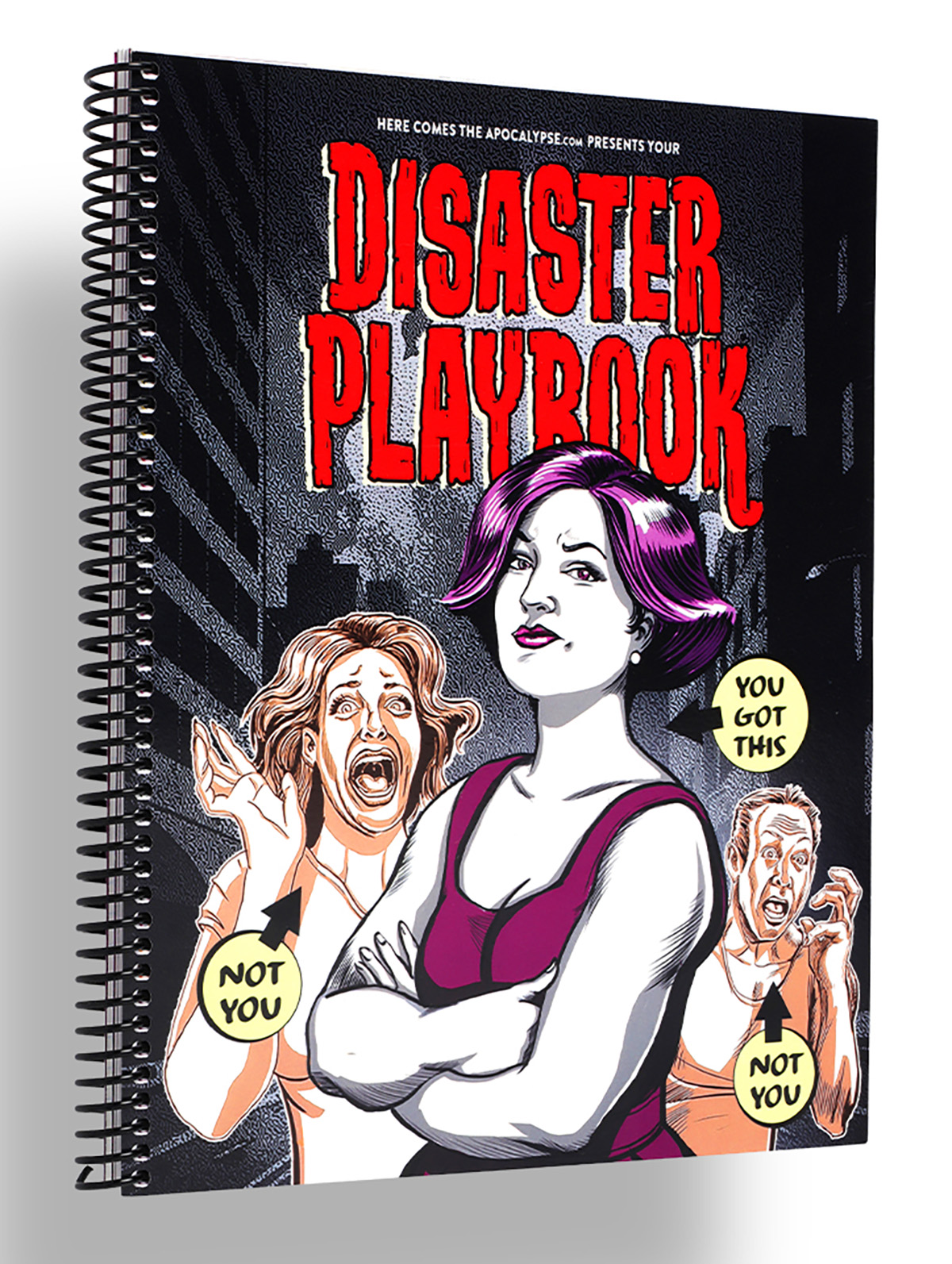
Wickless Vulva Candles
Bold, luxurious, and completely flame-free, CTOAN’s wickless candles melt from beneath on a warmer, releasing subtle, sophisticated fragrances, like sandalwood or lavender. The vulva-shaped wax adds a playful, provocative element to any space –perfect for a bedroom, living room, or anywhere you want elegance with an edge. A gift that celebrates form, intimacy and self-expression, no fire required. $39, CTOANCO.com
Villeroy & Boch Royal Classic Christmas Collection
Every meal is a mini celebration – with whimsy at every place setting – in Villeroy & Boch’s Royal Classic festive dinnerware collection that hits all the right notes. Made from premium German porcelain, it features nostalgic little toys, nutcrackers, and rocking horses in delicate relief, giving your holiday spread a playful but refined twist. Dishwasher- and microwave-safe, it’s luxe without the fuss. Gift a piece to a special someone, or start a collection they’ll use (and show off) for years to come. $22-$363, Villeroy-Boch.com
Greenworks Electric Lawnmower
You a ’hood queen who considers lawn care performance art – or just wants to rule the cul-de-sac in quiet, emission-free glory? Greenworks’ zero-turn electric mower has the muscle of a 24-horsepower gas engine but none of the fumes, drama or maintenance. Six 60V batteries and a 42-inch deck mean you can mow up to two-and-a-half acres on a single charge – then plug in, recharge, and ride again. It’s whisper-quiet, slope-ready, and smooth enough to make you wonder why you ever pushed anything besides your queer agenda. The perfect gift for the homeowner who loves sustainability, symmetry, and showing off their freshly striped yard like that fresh fade you get on Fridays. $5,000, GreenworksTools.com
Molekule Air Purifier
For the friend who treats their space like a sanctuary (or just can’t stand sneezes), the Molekule Air Pro is magic in motion. Covering up to 1,000 square feet, it doesn’t just capture allergens, VOCs, and smoke – it destroys them, leaving your air feeling luxury-clean. FDA-cleared as a Class II medical device, it’s serious science disguised as modern design. Gift it to your city-dwelling, pet-loving, candle-burning friend who likes their living room as pristine as their Instagram feed. $1,015, Molekule.com

Cipriani Prosecco Gift Set
Effervescent with stone-fruit sweetness and a touch of Italian flair, the Cipriani Bellini & Prosecco gift set brings brunch-level glamour to any day of the week. The Bellini blends rich white-peach purée with sparkling wine, while the dry ’secco keeps things crisp and celebratory. Pop a bottle, pour a flute, and suddenly winter weeknights feel like a party – even with your pants off. $36, TotalWine.com
Woo(e)d Cologne
British GQ recently crowned Woo(e)d by ALTAIA the “Best Date Night Fragrance,” and honestly, they nailed it. Confident without being cocky – smoky gaïac and Atlas cedarwood grounds the room while supple leather and spicy cardamom do all the flirting – it’s a scent that lingers like good conversation and soft candlelight. Gift it to the one who always turns heads – or keep it for yourself and let them come to (and then on) you. $255, BeautyHabit.com
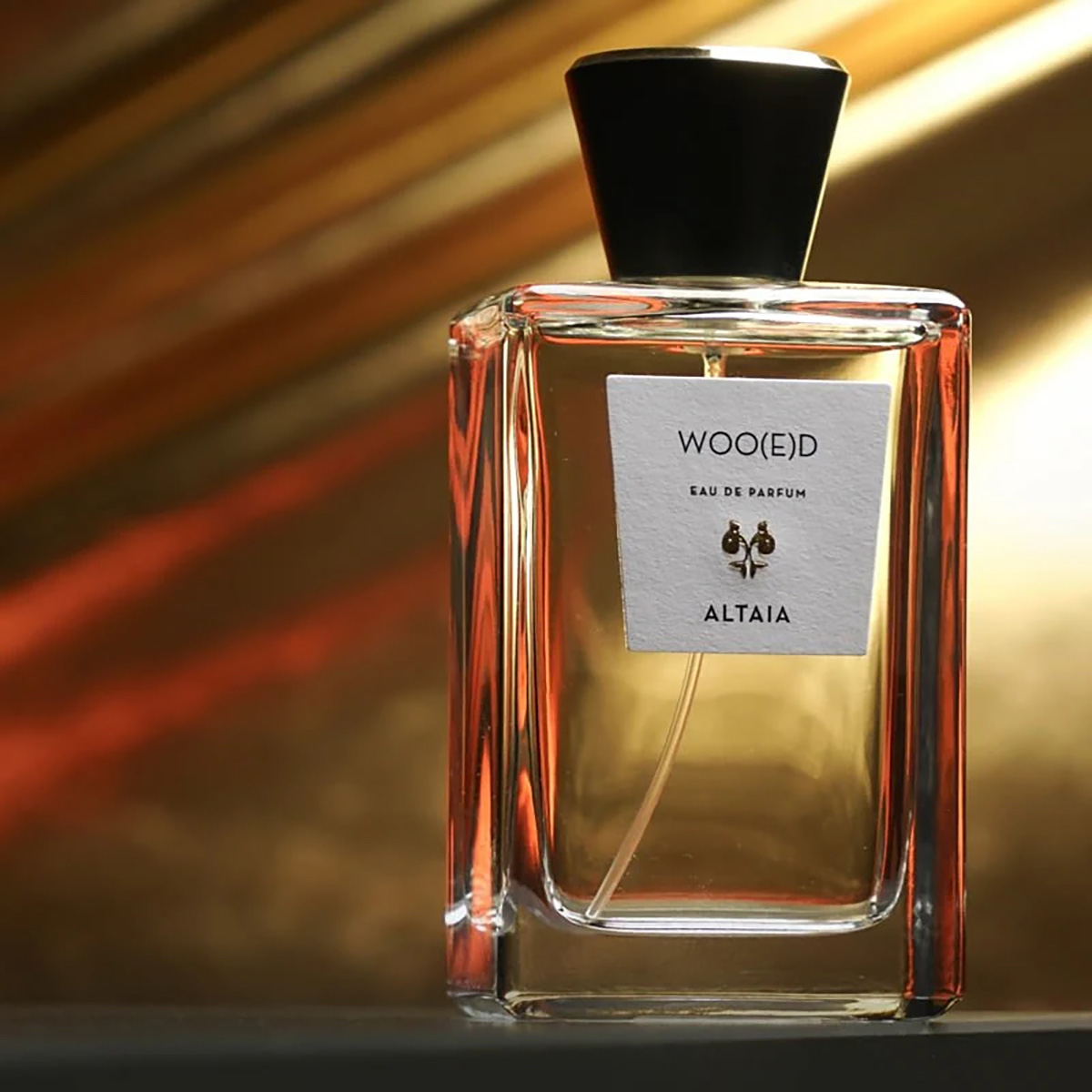
Lococo Cocoa Kit
Keep the run-of-the-mill mugs in the cabinet this Christmas and pull out Lococo’s handcrafted Oaxacan versions that demand you slow down and sip like it matters. Paired with a wooden scoop, rechargeable frother, and Lococo’s signature spice hot-chocolate blend (vegan, gluten-free, with adaptogenic mushrooms), this holiday kit turns Mexi-cocoa into a mini ritual you’ll look forward to. Perfect for anyone who loves a little indulgence with a side of ¡A huevo! energy.
Manta Sleep Mask
Total blackout, zero pressure on the eyes, and Bluetooth speakers built right into the straps, this ain’t your mama’s sleep mask — but it could be. The Manta SOUND sleep mask features C-shaped eye cups that block every hint of light while ultra-thin speakers deliver your favorite white noise, meditation, or late-night playlist straight to your ears. With 24-hour battery life, breathable fabric, and easy-to-adjust sound, it turns any bed (or airplane seat) into a five-star sleep suite. Perfect for anyone who treats shut-eye like an art form (or just wants to escape their roommate’s late-night bingin’ and/or bangin’). $159, MantaSleep.com

Shacklelock Necklace
Turn the industrial-chic vibe of a shackle into a sleek statement. Mi Tesoro’s platinum-plated stainless-steel necklace sits on an 18-inch wheat chain, featuring a shackle-style latch pendant that’s waterproof, tarnish-free, and totally fuss-les. Beyond style, it nods to a classic gesture in the queer leather community: replacing a traditional Master lock with something elegant to quietly signal belonging to someone special. Wear it solo for a minimalist edge or layer it like you mean it; either way this piece locks in both your look and your intentions. $90, MiTesoroJewelry.com
Parkside Flask Mojave Edition
Wine nights get a desert glow-up with Parkside’s limited-edition 750-milliliter all-in-one flask draped in sun-washed bronze and badland hues like sage, sand, and terracotta – with magnetic stemless tumblers that snap on for effortless shareability. It keeps your vino chilled for 24 hours, pours without drips (no tears for spilled rosé, please), and even lets you laser-engrave your own mantra or inside joke. Perfect for picnics, surprise rooftop clinks, or gifting to your favorite wine (or desert) rat. $149, HighCampFlasks.com
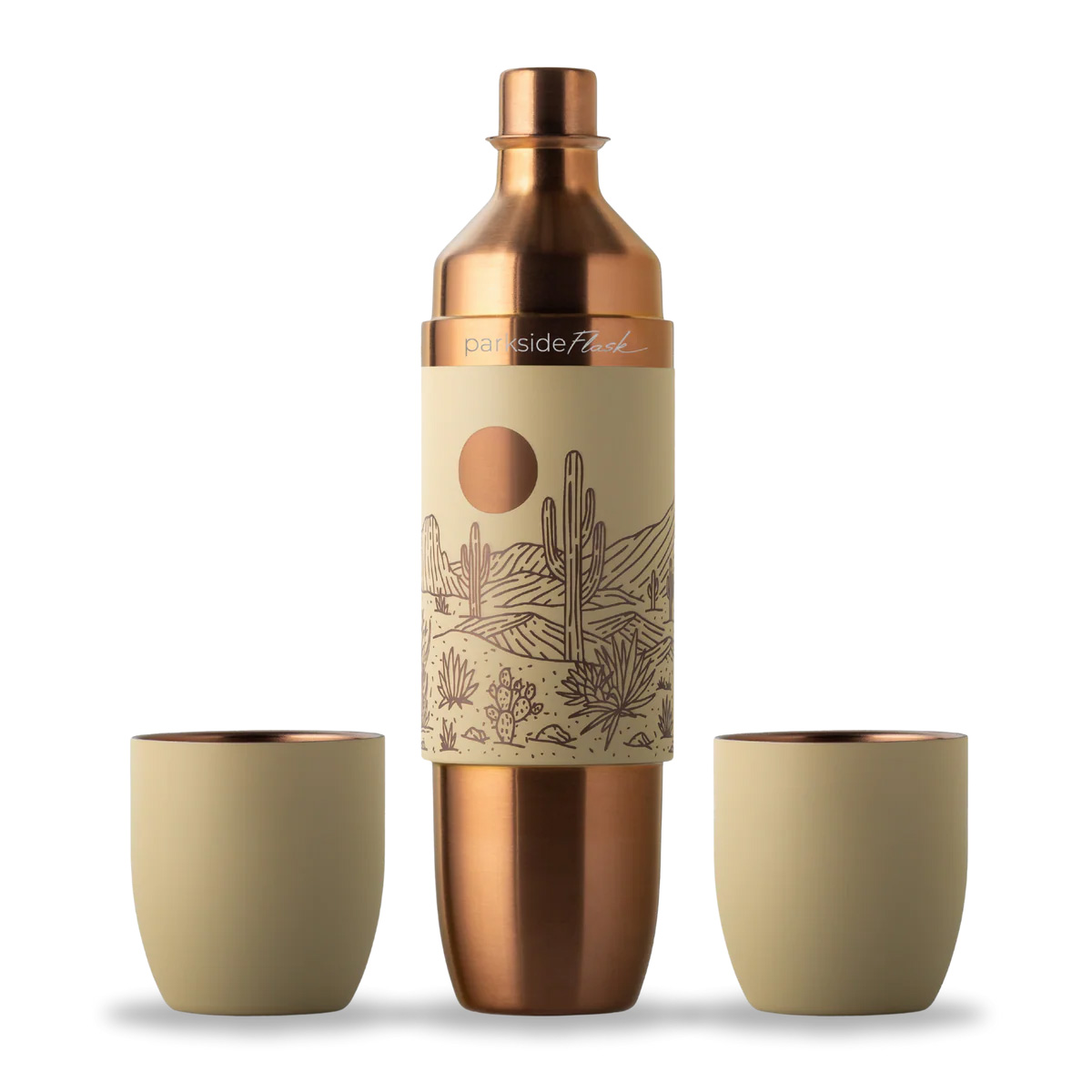
Mikey Rox is an award-winning journalist and LGBT lifestyle expert whose work has published in more than 100 outlets across the world. Connect with him on Instagram @mikeyroxtravels.

